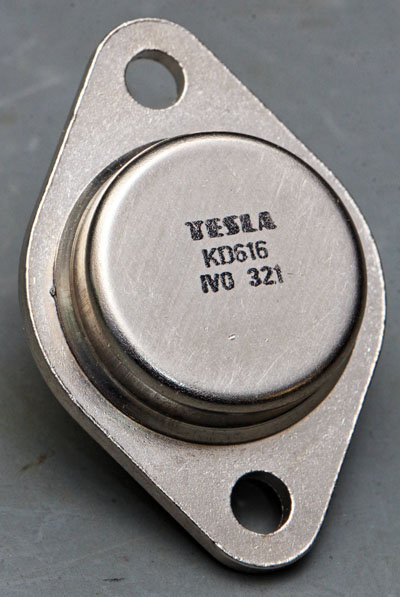
Tesla KD616, a PNP power transistor for linear applications. It´s the complementary part to the KD606.
60V, 10A, 2MHz, hfe>30 @1A
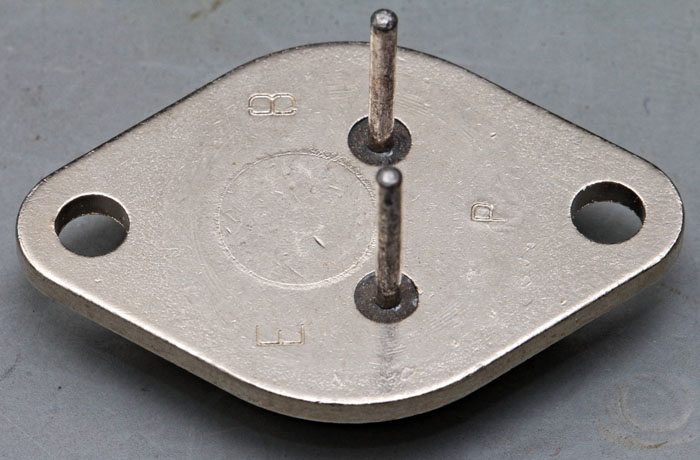
B and E, so you know where to find the right potential.

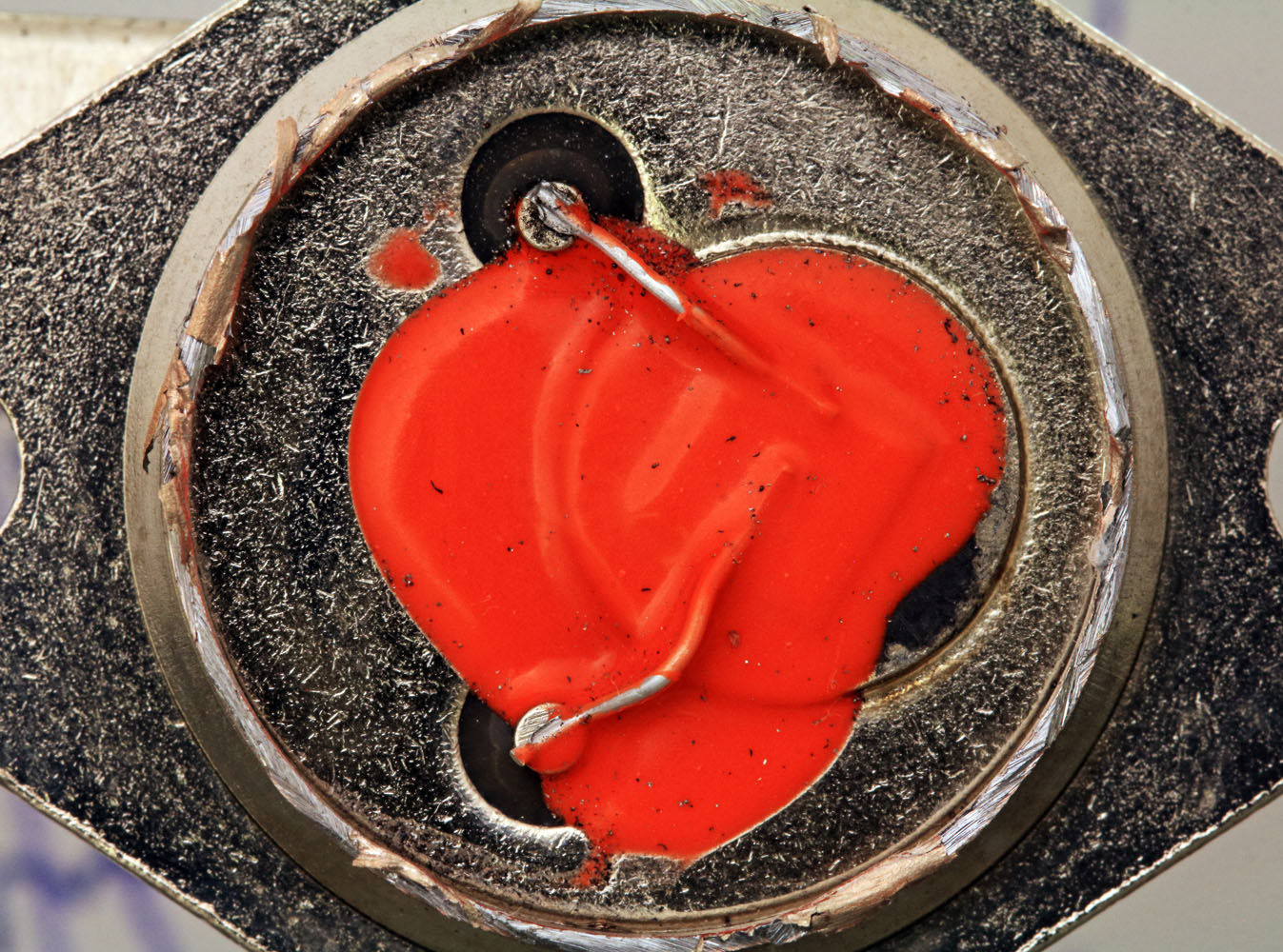
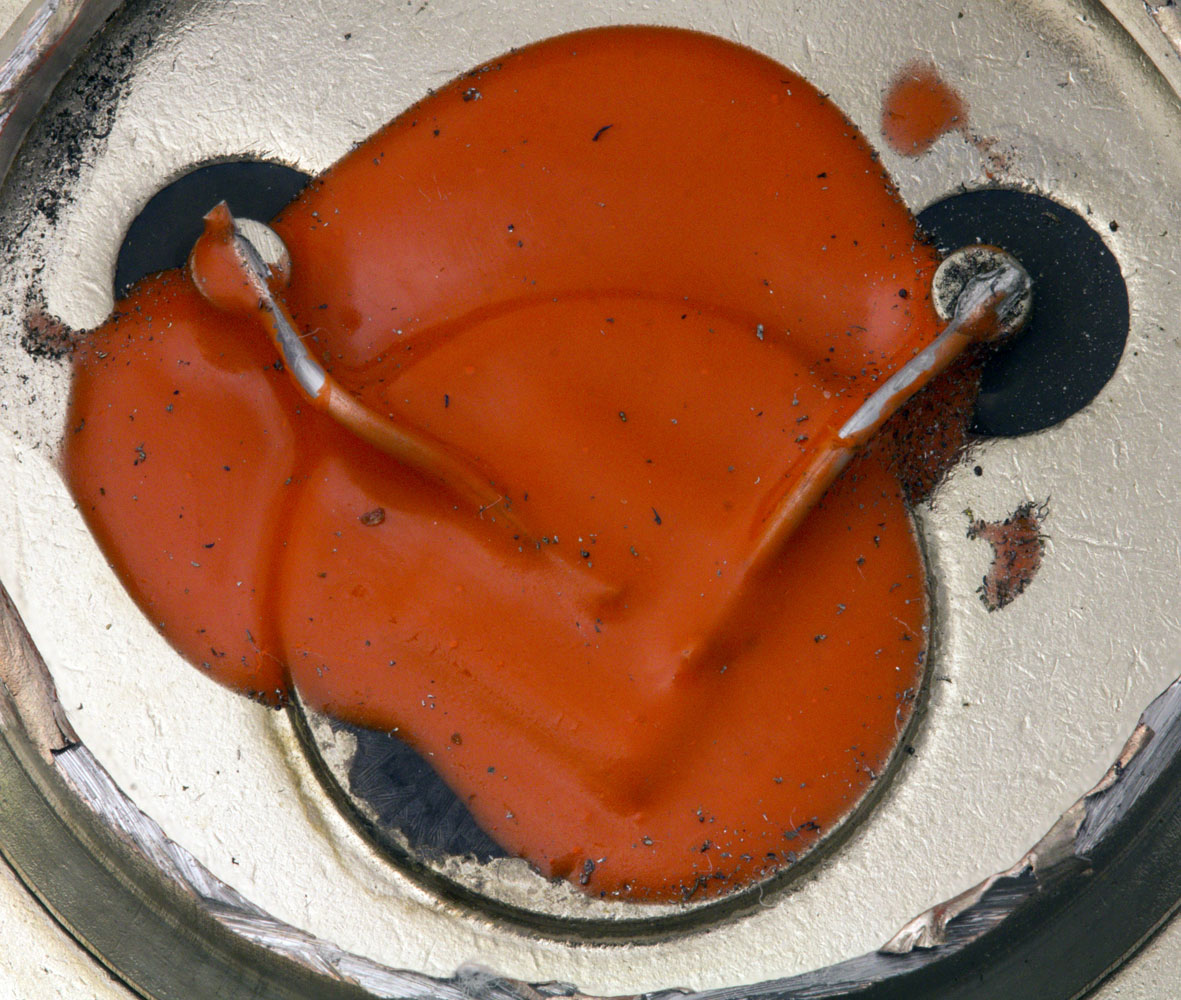
We know these Tesla transistors with the red potting.
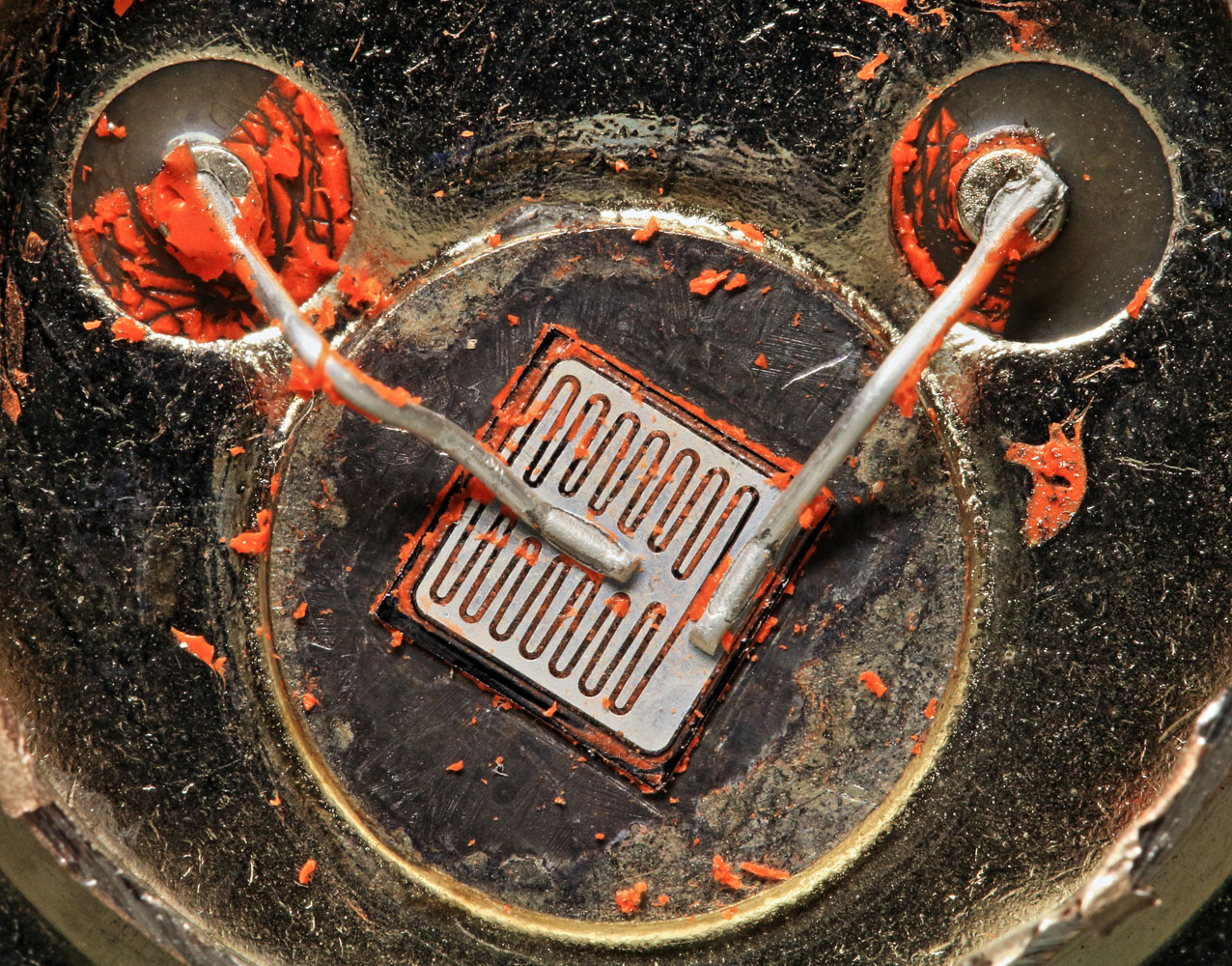
The potting doesn´t stick very hard but it´s still not easy to remove it completely.
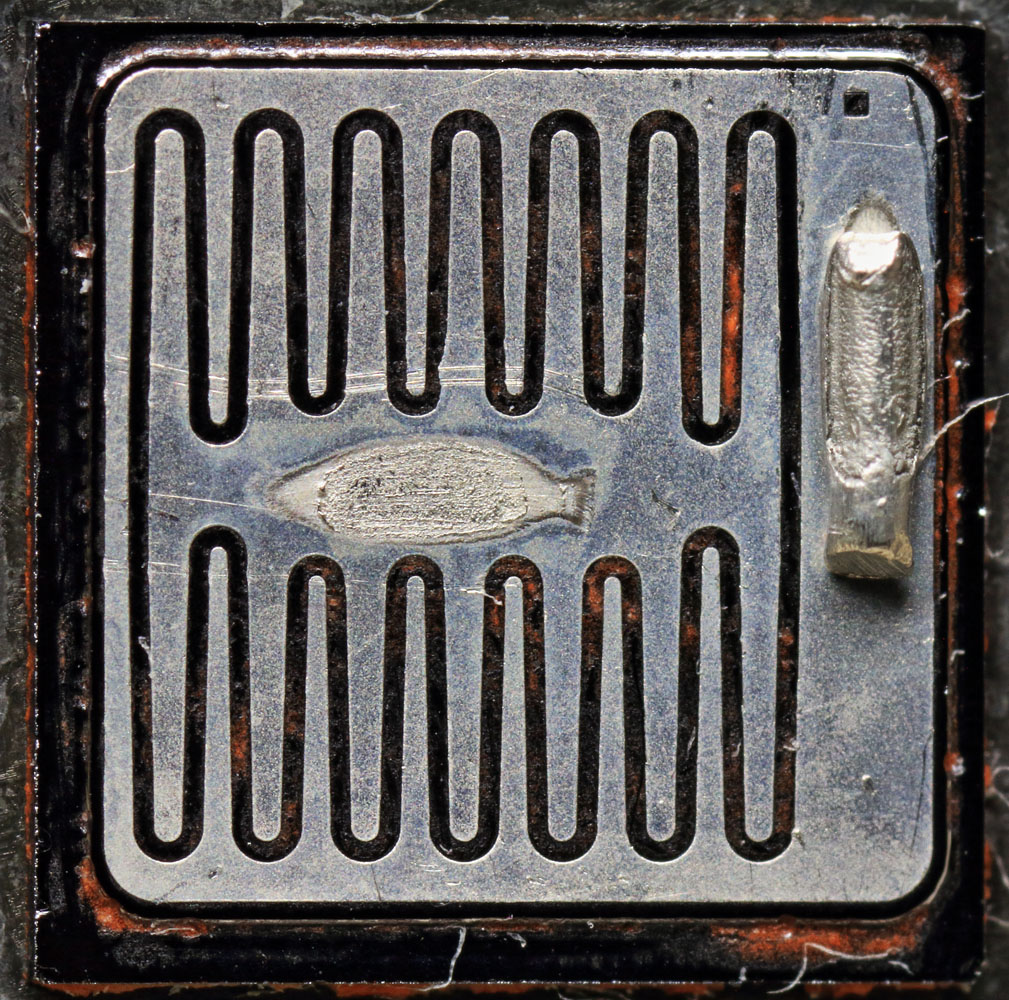
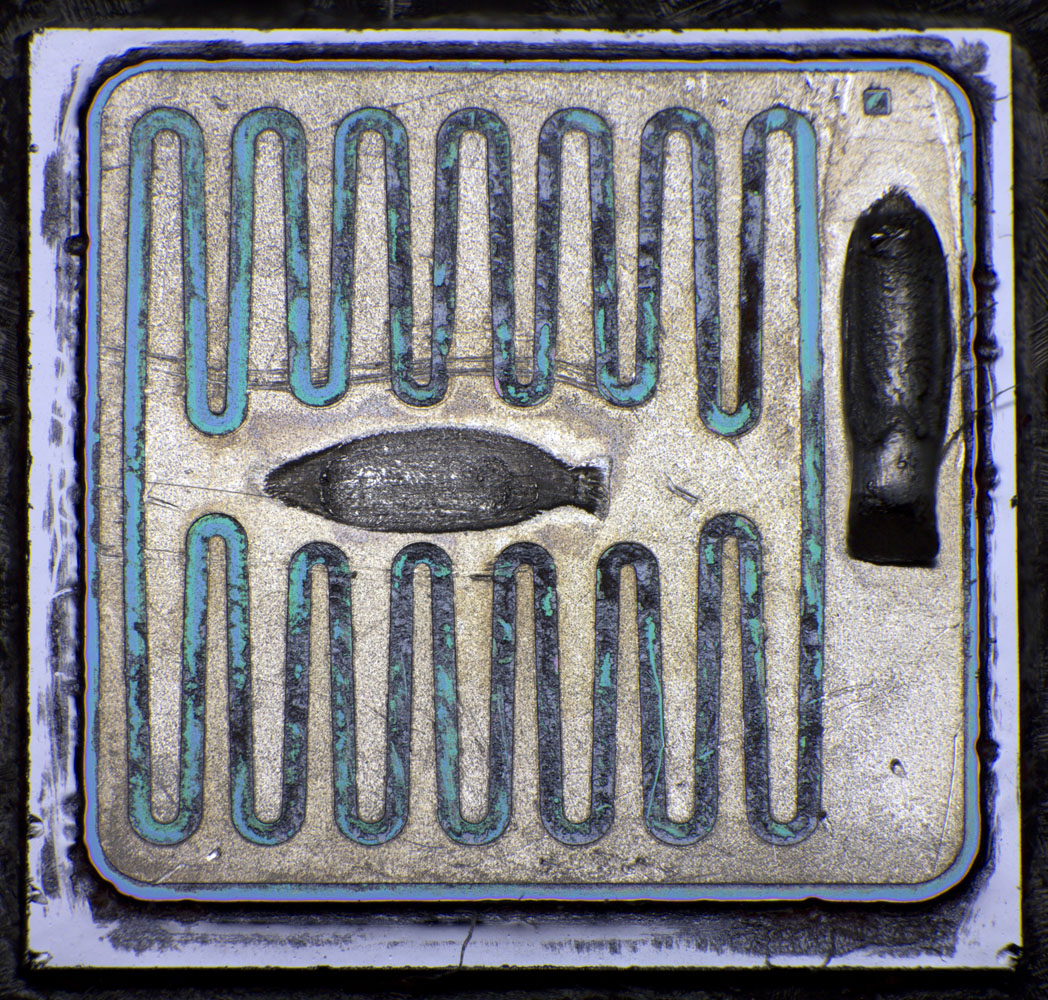
The die is quite similar to the KD605 (
https://www.richis-lab.de/Bipolar46.htm). I assume the KD60x (NPN) and the KD61x (PNP) are the same transistors just binned to different voltage ratings.
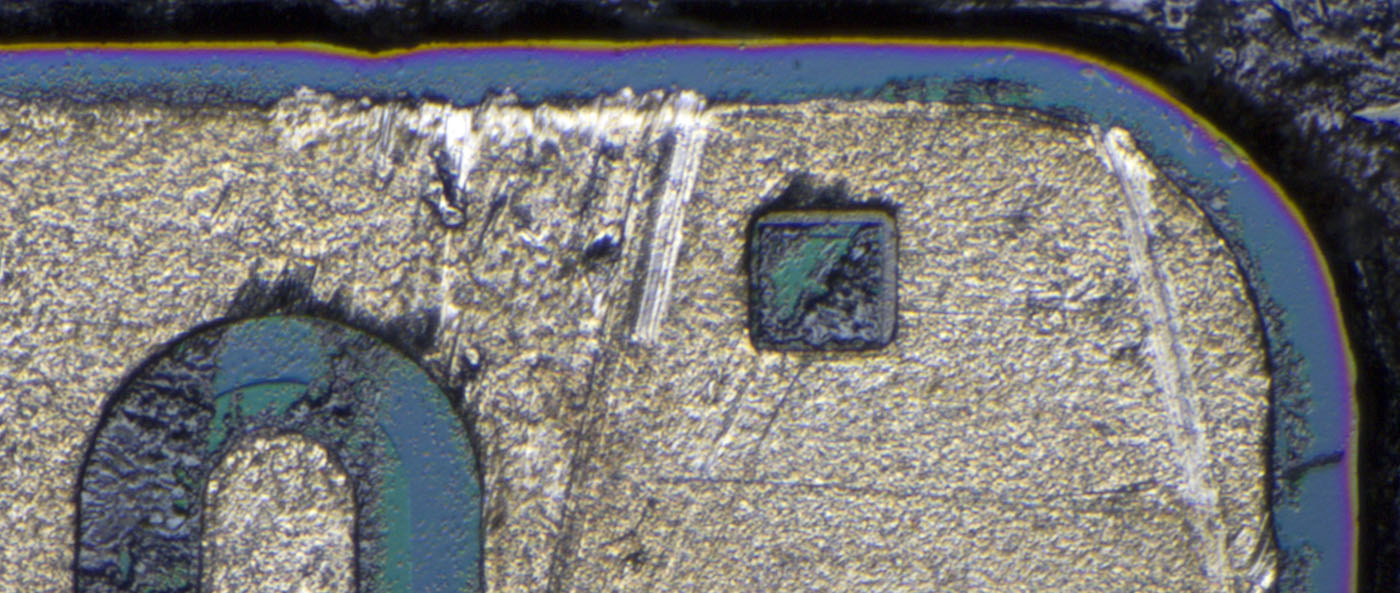
There is a square hole in the metal layer. You can see a square in the silicon underneath. This way you can check the mask alignment.
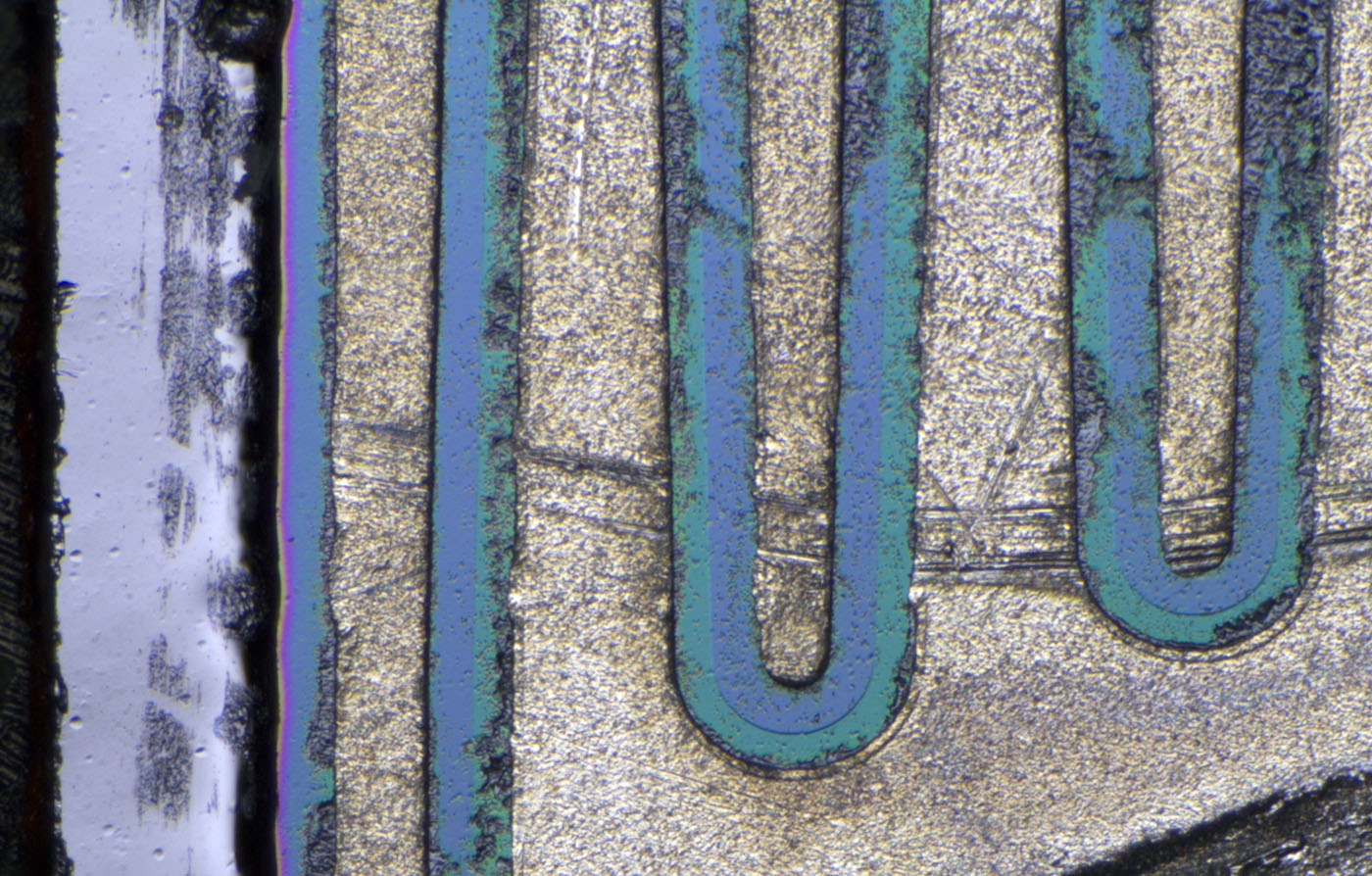
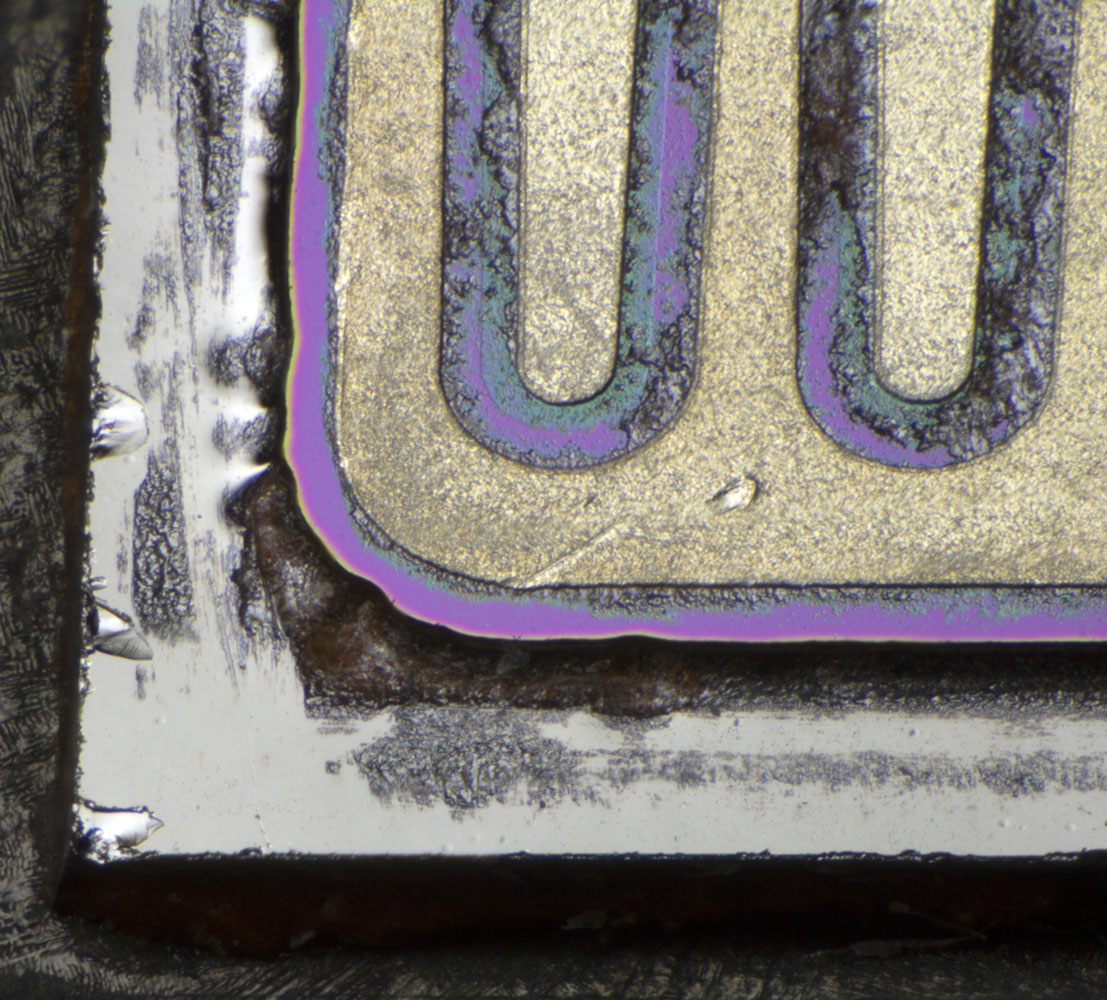
Here you can see the different colors of base and emitter. At the edges of the metal at some places you can see the step of the hole in the SiO2 isolation through which the metal can contact the silicon.
The MESA edge is quite poor compared to the KD605 (
https://www.richis-lab.de/Bipolar46.htm). That´s probably due to the age. KD616 is "IV" => May 1979. KD605 is "S6" => June 1984. It seems like they have improved the process.
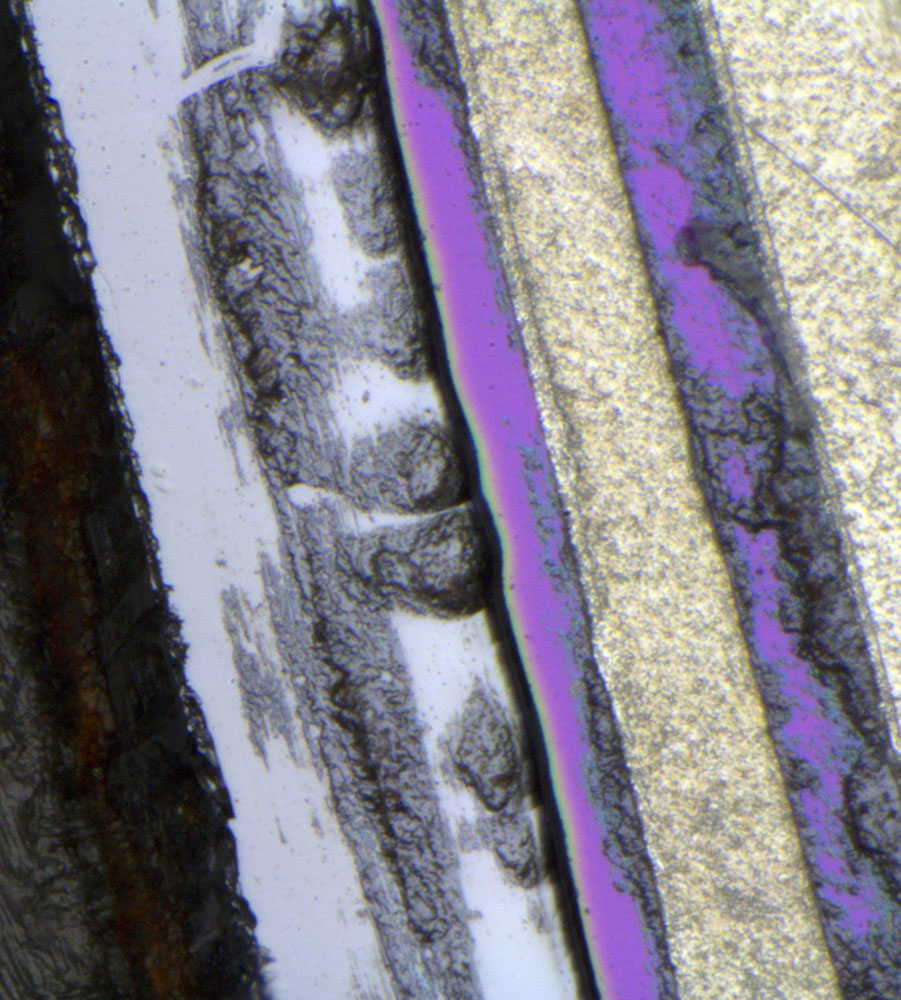
Viewed sideways you can see how inhomogeneous the etching ist.
https://www.richis-lab.de/Bipolar87.htm 